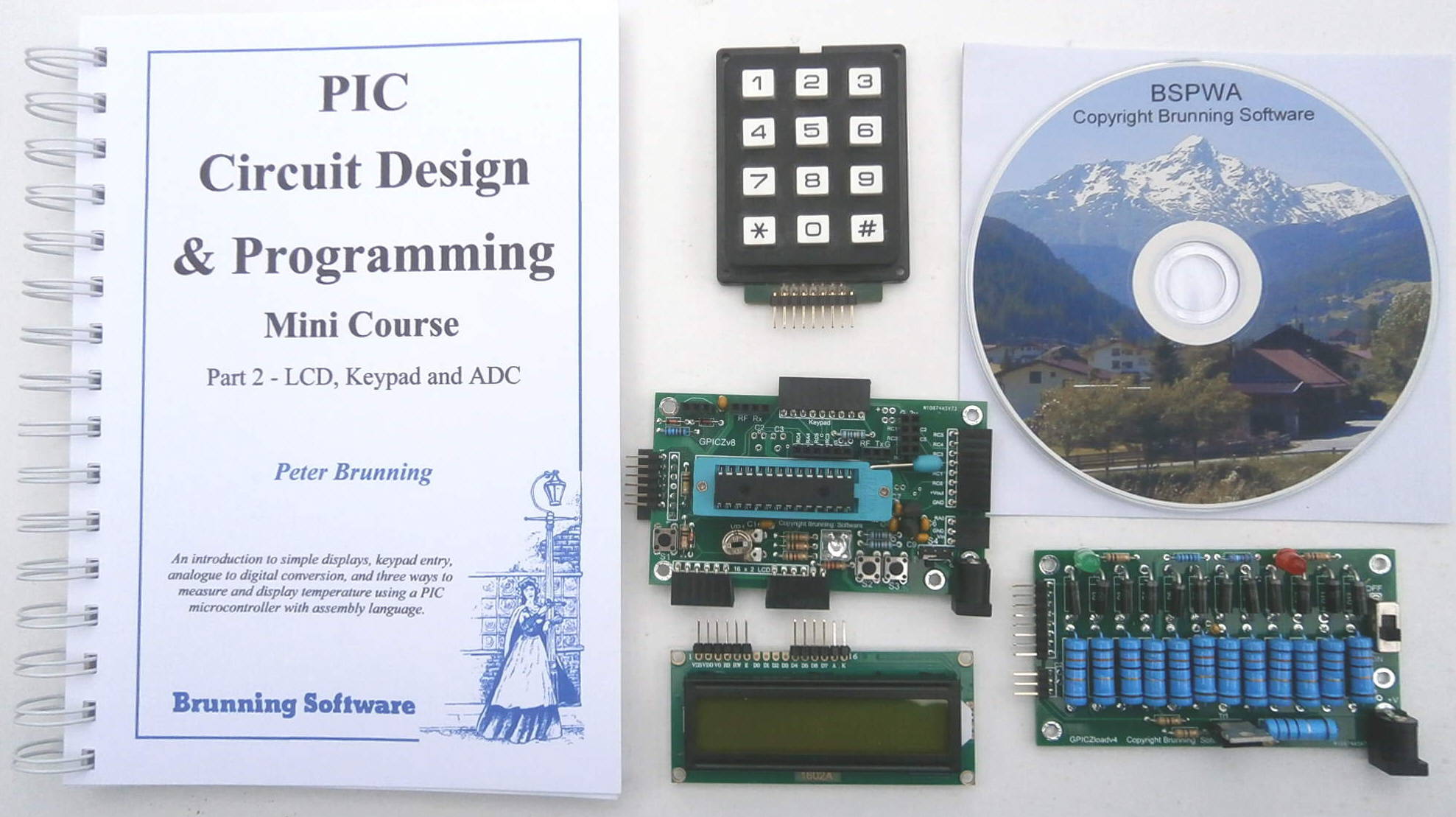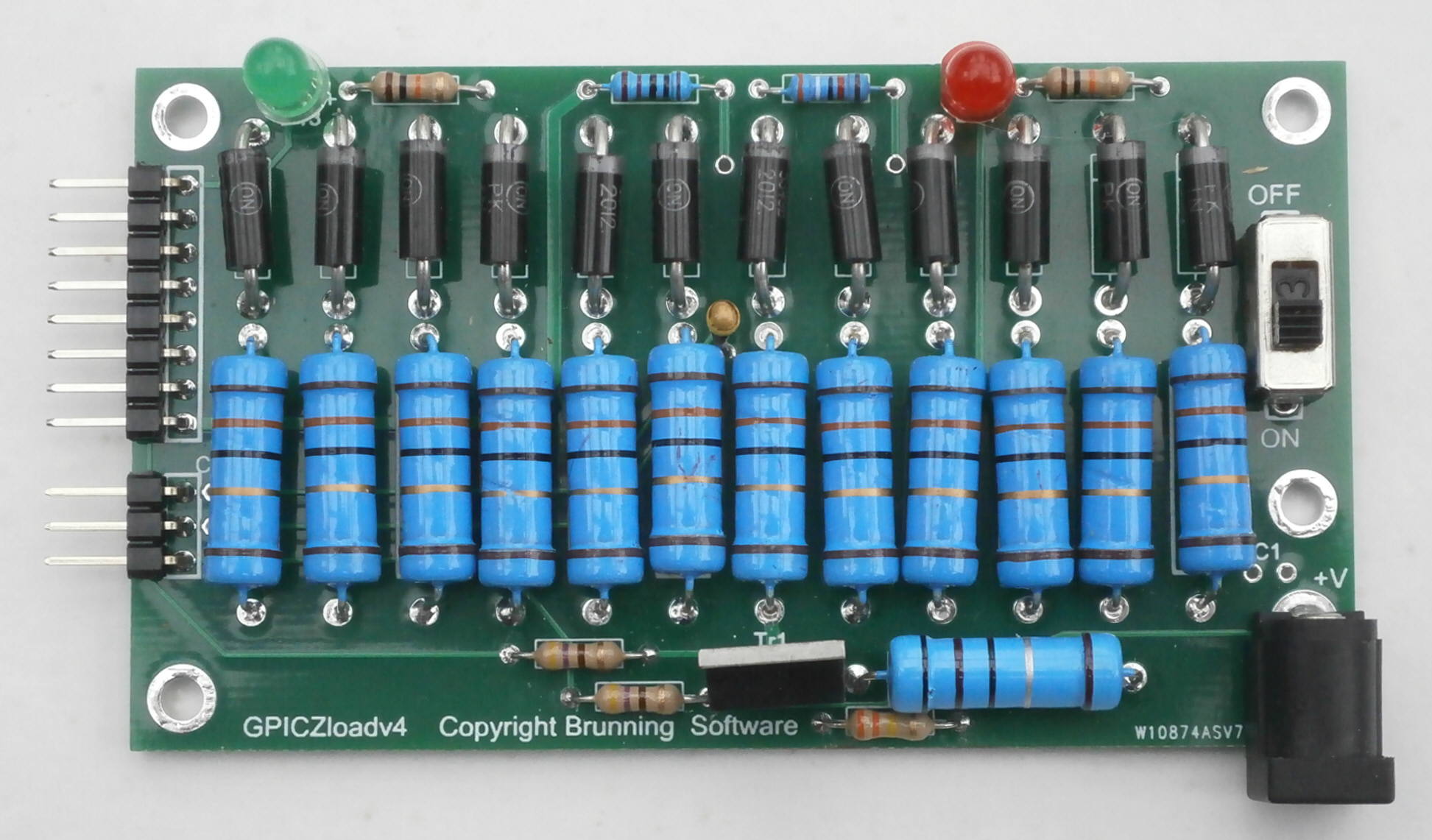
| Home | Price List | Order Info | P955H PIC Training Course | BMP280 Mini Training Course | PIR & RF Data Training Course |
|
PIC Training Course Mini Course Part 2: LCD, Keypad and ADC and measuring temperature & solar panel power New January 2023 |
|
This PIC training course is Part 2 of our mini course. It follows that for Part 2 you are expected to have some knowledge of programming. If you have experience of programming but never used a PIC you should find no problem starting here. All the programme code is written in assembler which is the natural language of PIC microcontrollers. We avoid the complex procedures making this the easiest way to learn about programming PICs. This course follows the same well proved pattern of our P955 PIC training cource which has achieved wide spread approval from the readers. Instead of wading laboriously into detailed theory the interest of the reader is captured by jumping straight into creating useful code. This has two very interesting objectives. The first is to create code to measure temperature using three different sensors. The second is to measure the power from a solar panel. Both of these require knowledge of driving a display and using the PICs Analogue to Digital Converter (ADC). Then when the code for both of these objectives has been successfully created we combine the code so the temperature of the solar panel load can be measured while the power is being measured. |

|
|
All the experimental code is written to run in a GPICZv8 general purpose PIC training circuit which is shown at the center of this picture. The circuit on the right hand side is the 100 watt load which is used when measuring the power from a solar panel. The GPICZv8 module has provision to plug in a Brunning Software programmer (P205, P931, P942 or P955) or a PICkit 3 or 4. All the instructions in the Part 2 manual assume that a Brunning Software programmer is being used. |

|
|
The GPICZv8 has provision to plug in three different temperature sensors, LM35 and thermistor temperature sensors, and BMP280 air pressure and temperature sensor. One of each of these is provided with this course. In the final section of measuring the power of a solar panel we use a thermistor mounted on the 100 watt load to measure the temperature. |

|
|
The solar panel 100 watt load heats up very quickly and should be switched on just long enough to make a measurement of the voltage, current and power from a solar panel. We tested the load with a 30 watt and a 100 watt solar panel. The picture above shows the prototype. Notice that one of the resistors has overheated. This was caused by a faulty component which diverted most of the power into that resistor. The faulty component has been replaced and now the circuit works perfectly. The components in the 100 watt load are rated for a total continuous dissipation of 90 watts at 25 degrees C but the components heat each other so in practive the load should be run just long enough to make a stable measurement. In the final experiment we use the MOSFET on the load's PCB to turn ON for half a second, take a measurement then turn OFF for 5 seconds, then ON for half a second, make a measurement and so on. So a measurement is made every 5.5 seconds with the load ON for one eleventh of the time. If you do not have a solar panel you will find reading that section of the book is very good education. If you have Part 1 of the mini course then you have a P205 programmer so go for Option 2. If you have have our PIR and RF course go for Option 3. |
|
Price List: Option 1. Mini course part 2 complete..... £81.45 including delivery to UK Includes P205 programmer. Supplied built and tested. Book: Mini Course Part 2 156 pages 210x150mm. + GPICZv7 general purpose PIC circuit. + P205 PIC programmer. + USB to PC lead. + 100 watt load. + 2 line 16 character LCD. + Keypad + PIC18F24K22 + Thermistor temperature sensor. + BMP280 temperature & pressure sensor. + PIC assembler and assembler text on CD + 4xAA battery box + lead |
|
Option 2. Mini course part 2 without P205..... £63.45 including delivery to UK P205 programmer not included. Supplied built and tested. Book: Mini Course Part 2 156 pages 210x150mm. + GPICZv7 general purpose PIC circuit. + 100 watt load. + 2 line 16 character LCD. + Keypad + PIC18F24K22 + Thermistor temperature sensor. + BMP280 temperature & pressure sensor. + PIC assembler and assembler text on CD + 4xAA battery box + lead |
|
Option 6. Mini course part 2 update..... £48.90 including delivery to UK For customers who have our PIR & RF course (No P205, no LCD, no keypad). Supplied built and tested. Book: Mini Course Part 2 156 pages 210x150mm. + GPICZv7 general purpose PIC circuit. + 100 watt load. + PIC18F24K22 + Thermistor temperature sensor. + BMP280 temperature & pressure sensor. + PIC assembler and assembler text on CD |
| Home | Price List | Order Info | P955H PIC Training Course | BMP280 Mini Training Course | PIR & RF Data Training Course |